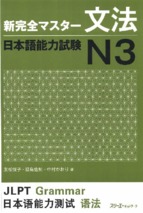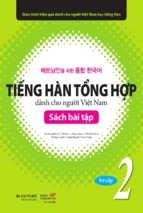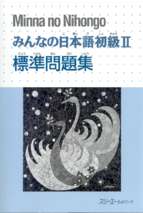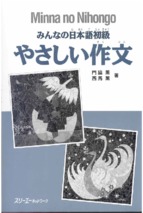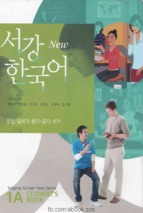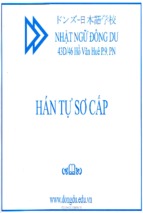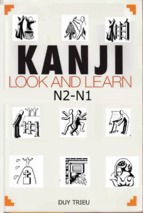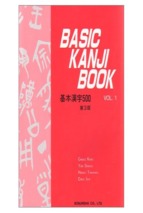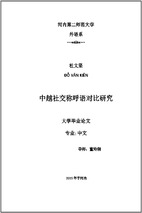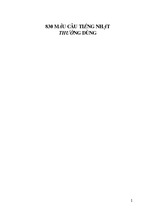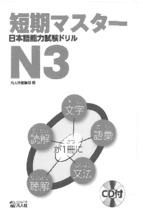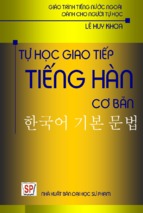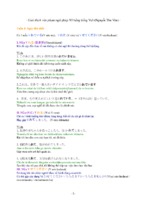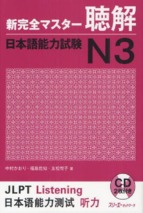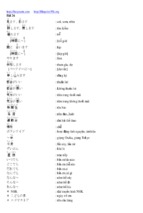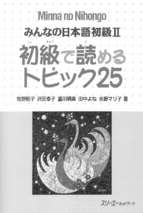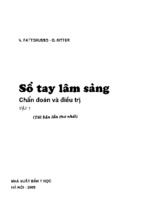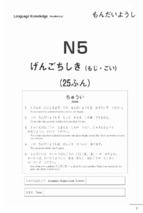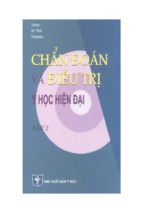5
영어권 『맞춤 한국어』는 한글학교에서 한국
가정이나 또래 집단에서 곧바로 활용할 수 있
어를 배우는 영어권 어린이들을 위한 교재이
도록 하려면 문형 중심의 교육이 실용적이라
다. 그중 5권인 본 교재는 초등학교 3, 4학년
고 판단하였기 때문이며, 이때 다양한 연습 유
수준의 학생에게 초점을 맞춘 교재로서 일상
형과 활동으로 학습에 대한 부담을 덜어 주려
생활에 필요한 한국어 표현을 어린이들의 눈
하였다. 둘째, 실생활에서 유용하게 사용될 수
높이에 맞는 재미있고 다양한 활동을 중심으
있는 구어 표현을 중심으로 구성하되 읽기 및
로 구성하였다.
듣기 활동을 통해 문어 표현도 제시하여 다양
한 한국어 표현을 익히고 사용할 수 있도록
본 교재는 한글학교의 교육과정을 고려하
하였다. 셋째, ‘고딕체’를 사용하여 가독성을
여 개발되었다. 한 학기의 수업 시간(주 1회
높이고 글자체에서 올 수 있는 혼돈을 줄였다.
2~3시간)에 맞게 전체 단원을 16개로 정하고
1주에 한 개 단원을 학습할 수 있도록 구성하
교재는 본문을 중심으로 새로 나온 단어와
였다. 특히 3개 단원을 1개의 챕터(chapter)로
문형을 익히는 ‘배워 봐요’와 배운 내용을 토대
묶어 단계별 학습뿐만 아니라 학습 내용 확인
로 ‘이야기해요’, ‘읽어 봐요’, ‘들어 봐요’, ‘써 봐
및 심화 학습이 가능하도록 구성한 것이 특징
요’의 언어 기능별 다양한 연습 활동으로 구성
이라고 할 수 있다. 또한 학습자들이 해외에
하였다. 교재 구성을 세부적으로 살펴보면 다
거주하는 점을 감안하여 한국 문화를 자연스
음과 같다.
럽게 접하게 하는 동시에 비교문화적 관점에
서 세계 여러 나라의 문화를 다룸으로써 문화
에 대한 열린 자세를 가질 수 있도록 도모하
였다. 무엇보다 학습자들이 영어권 어린이들
교재 구성
이라는 점을 고려하여 본문을 제외한 모든 학
습 내용과 연습 활동의 지시문을 한국어와 영
본문은 단원에서 목표로 하는 문형과 어휘
어로 모두 제시하였으며, 부록으로 한국어와
를 포함하고 있는 6~8문장 정도의 대화문 또
영어 단어 색인, 본문의 영어 번역, 단원별 학
는 서술문으로 제시하였다. 본문에는 주제와
습 내용의 영어 소개란을 두었다.
관련된 그림을 삽화로 제시하여 학습자의 이
해를 돕고자 하였다.
내용 구성에 있어서 본 교재의 특성은 다음
과 같다. 첫째, 문법이 아닌 문형 중심으로 교
육 내용을 구성하였다. 교실에서 배운 내용을
2
맞춤 한국어
▣ 배워 봐요
▣ 들어 봐요
단원에서 배워야 하는 어휘와 표현을 제시
확인 및 심화 단원에 일상 대화부터 문의
하였다. 어휘는 본문, 읽기, 듣기 등에 새로 출
및 상담 대화, 또는 안내 방송 등의 다양한 담
현한 어휘로 구성되어 있으며 명사-동사-형
화 상황을 듣고 이해할 수 있도록 듣기 활동
용사-부사-연어 구성 표현 순으로 배열했다.
을 편성하였다.
문법 및 표현에서는 각 단원에 2개씩 제시했
으며 목표 표현 부분은 글자의 색깔을 다르게
▣ 써 봐요
하여 시각적으로 부각시키고자 하였다. 또한
확인 및 심화 단원에 배운 표현을 활용하여
모든 내용에 영어 번역을 병기하여 학습자의
문장을 직접 구성해 볼 수 있도록 해당 챕터
이해를 돕고자 하였다.
(chapter)의 주제와 관련된 작문 활동을 편성
하였다.
▣ 연습해요
새로 배운 표현을 반복적으로 연습할 수 있
▣ 문화 배우기
도록 하였다. 형태 중심으로 반복 연습하게
사진이나 그림 자료와 함께 한국 문화를 소
함으로써 새 표현에 자연스럽게 익숙해지도
개하는 것을 주 목적으로 하되 일방적인 한국
록 하였다.
문화만 소개하는 것이 아니라 학습자가 속한
문화권의 문화와 자연스럽게 비교해 보도록
▣ 이야기해요
함으로써 문화상대주의적 시각을 기를 수 있
새로 배운 단어나 문형을 짝 활동 또는 모
도록 하였으며, 다양한 한국 문화의 모습과 어
둠 활동을 통해 직접 사용해 볼 수 있도록 하
린이들이 흥미를 가질 만한 소재를 다루었다.
였다. 예시 대화문을 주어 참고할 수 있도록
하였다.
▣ 읽어 봐요
일기, 안내문, 게시판, 광고 등 실생활에서
접할 수 있는 텍스트 자료를 활용하여 한국어
담화 구조를 익히고 독해 능력을 향상시킬 수
있도록 하였다.
일러두기
3
Introduction
Korean School: Korean Language is a
textbook used in Korean school for Englishspeaking children. Five volumes of the text
are used as a core text to instruct third and
fourth year elementary school students in
the rudiments of Korean language related
to daily life. The book contains interesting
subjects and a variety of activities to facilitate
learning.
The textbook was designed with the
concerns of education in mind. The text
is intended to be easily adaptable in the
classroom as it contains 16 units (1 unit
per week, each lesson lasting 2-3 hours). A
review chapter follows every third chapter to
solidify learning and to enrich understanding.
In consideration of those students residing
outside of Korea, efforts have been made to
teach Korean culture within a global context
allowing for a basic framework for studies
in comparative culture. With the needs
of English-speaking learners in mind, the
instructions for all activities are given in both
Korean and English. As well, students may
consult the appendix at the back of the book
as well as a glossary of terms for translated
Korean terms.
The special features of the textbook are
as follows. First, proper sentence structure
formation, rather than excessive grammar
rules, constitutes the main focus of each
4
맞춤 한국어
chapter. The aim of the book is to have
students use the language they learn right
away at home or with their peers and thus
the book espouses a decidedly practical
approach to learning. To this end, students
learn by engaging in a variety of activities
intended to reduce anxieties related to
learning. Secondly, although an emphasis is
placed on the functional aspect of language
and the vernacular in speaking and listening
exercises, students will also be able to learn
and use literary variants of Korean language
as well. Thirdly, in order to reduce confusion
and increase readability, the book utilizes
Gothic type font.
The text reinforces student learning of new
vocabulary and sentence structure through
‘Let’s Learn’, and various exercises based
on the content of learning are designed to
strengthen language skills such as ‘Let’s Talk,
Let’s Read, Let’s Listen and Let’s Write’.
Book Content
Every unit in the book is devoted to teaching
6 to 8 key vocabulary words and sentence
patterns presented by giving sample dialogs
as well as descriptive sentences. Illustrations
and pictures accompany the subjects
presented in the text to assist learning.
▣ Let’s Learn!
Key vocabulary terms and expressions
are presented in each unit. New vocabulary
is presented through various exercises such
as reading and listening. Wherever possible,
variant parts of speech for each new word
are presented (noun, verb, adjective,
adverb, and collocation). Every unit also
contains 2 grammatical sentence types as
well as expressions which are highlighted
by a different color in the text to heighten
awareness. As well, in order to assist learning,
the contents of this section are rendered in
English alongside the Korean.
▣ Let’s Practice!
This section presents an opportunity to
practice new knowledge.
Students are
encouraged to use what they have learned
within an appropriate, natural context.
▣ Let’s Talk!
Students can practice using new vocabulary
and sentence patterns in speech. Natural
dialogs are given wherein students can
actively participate.
advertisement, etc.)
with the aim of
expanding linguistic and cultural knowledge.
▣ Let’s Listen!
Students will be able to listen to a dialog
to illustrate the key concepts of the chapter
in order to reinforce learning. Besides
conversations, students will listen to
announcements and other sound samples in
order to improve their listening skills.
▣ Let’s Write!
In order to reinforce their learning of
key expressions and words, students are
presented with an opportunity to write on a
selected topic for each unit.
▣ Let’s look at Korean culture!
Photographs or illustrations are presented to
introduce an aspect of Korean culture. This
is an opportunity for students to compare and
contrast their own culture to Korean culture.
The topics for discussion are chosen with the
needs and interests of young learners in mind.
▣ Let’s Read!
Students are presented with a variety
of reading pieces from diverse sources
(journals, announcements, bulletin boards,
일러두기
5
목 차
01 새 학년이 되었어요 It’s a new school year ‥‥‥‥‥‥‥‥‥‥ 10
02 만나서 반가워 I’m happy to meet you ‥ ‥‥‥‥‥‥‥‥‥‥ 16
03 학교생활이 즐거워요 School is fun‥ ‥‥‥‥‥‥‥‥‥‥‥ 22
04 어머니께서 시장에 가셨어요 My mother went to market‥‥‥‥‥ 30
05 할머니께 선물을 드릴 거예요 I will give a gift to grandmother‥ ‥‥ 36
06 오늘은 할머니 생신이에요 Today is grandmother’s birthday‥ ‥‥‥ 42
07 한국 노래를 가르쳐 주세요 Teach me a Korean song!‥ ‥‥‥‥‥ 50
08 토요일에 발표회 연습을 할까요? Shall we practice on Saturday?‥ ‥ 56
09 발표회에 와 주세요 Please come to our performance‥‥‥‥‥‥‥ 62
6
맞춤 한국어
10 뭐 하고 있어요? What are you doing?‥ ‥‥‥‥‥‥‥‥‥‥ 70
11 저도 아는 노래예요 I know this song too‥ ‥‥‥‥‥‥‥‥‥ 76
12 가장 친한 친구예요 This is my best friend‥ ‥‥‥‥‥‥‥‥‥ 82
13 계단에서 뛰면 안 돼요 Don’t run on the stairs‥‥‥‥‥‥‥‥‥ 90
14 부모님을 도와 드렸어요 I helped my parents‥‥‥‥‥‥‥‥‥ 96
15 이웃에게 인사를 잘해요 Greeting others‥‥‥‥‥‥‥‥‥‥ 102
16 다음에 또 가고 싶어요 I wish I could visit again‥ ‥‥‥‥‥‥‥ 110
▣ 부록‥‥‥‥‥‥‥‥‥‥‥‥‥‥‥‥‥‥‥‥‥‥‥ 118
한글학교 한국어
7
등장인물
슬기
성진
수연
8
맞춤 한국어
민수
엠마
앤드류
지나
제임스
한글학교 한국어
9
제1과
Lesson 1
새 학년이 되었어요
It’s a new school year
1
선생님: 새 학년이 되었어요. 여러분의 계획을 발표해 보세요.
민 수: �저는 자주 늦잠을 잡니다.
앞으로는 아침에 일찍 일어나겠습니다.
엠 마: 저는 운동을 잘 안 합니다. 운동을 열심히 하겠습니다.
슬 기: 저는 제 방 청소를 하지 않습니다.
이제부터는 제 방은 제가 청소하겠습니다.
10
맞춤 한국어
Lesson
1
어휘 Vocabulary
계획
심부름
errand
to make the presentation
늦잠
유치원생
싸우다
plan
oversleeping
kindergartener
말씀
학년
words(honorific form of 말)
grade, year
발표하다
to fight
사이좋게 지내다
to getLet’s
along
with each other
읽어봐요
Read!
문법 및 표현 Grammar and Expression
(1) AV+겠
한국어를 열심히 공부하겠습니다.
I will study Korean very hard.
친구들하고 잘 지내겠습니다. I will get along with friends.
학교에 지각하지 않겠습니다. I will not be late at school.
(2) AV/DV+고, N+(이)고
한국어는 쉽고 재미있어요.
Korean is easy and fun.
민수는 책을 읽고 슬기는 그림을 그려요.
Minsu reads a book and Seulgi draws a picture.
저는 초등학생이고 동생은 유치원생입니다.
I'm an elementary school student and my younger sibling is a kindergartener.
제1과 | 새 학년이 되었어요
11
1. <보기>와 같이 문장을 완성하십시오.
Complete the sentences following the example.
보기
제 동생은 귀엽고 착해요. (귀엽다, 착하다)
(1) 한국어는
(쉽다, 재미있다)
(2) 우유는
읽어봐요 Let’s
Read!
(맛있다, 건강에 좋다)
(3) 하늘이
(맑다, 높다)
(4) 나는
동생은
(5) 엄마는
(책을 읽다, 그림을 그리다)
아빠는
(청소하다, 요리하다)
2. <보기>와 같이 문장을 바꿔 보십시오.
Change the sentences following the example.
보기
일 월 화 수 목 금 토
5
12
6
7 8 9 10 11
매일 일기를 쓰겠습니다.
(1) 숙제를 꼭
(2) 피아노를 열심히
(3) 반찬을 골고루
(4) 밤에 일찍
맞춤 한국어
Lesson
1
⊙ 여러분은 어떤 계획을 세웠습니까? 이야기해 봅시다.
What kind of plan did you make? Share your thoughts with the class.
읽어봐요 Let’s Read!
(1) 이번 학기
(2) 내년
제1과 | 새 학년이 되었어요
13
읽어봐요 Let’s Read!
⊙ 다음을 읽고 질문에 답하십시오.
Read the following passage and answer the questions.
우리 반 이야기
엠마
슬기
제임스
수연
민수
(1) 무엇에 대한 내용입니까? What is the passage about?
□ 계획
□ 습관
□ 소원
□ 취미
(2) 위의 내용과 다른 것은 무엇입니까? Which of these is not consistent with the passage?
□ 슬기는 자전거를 못 탑니다.
□ 수연이는 일요일에 늦잠을 잤습니다.
□ 제임스는 태권도를 배우고 싶어합니다.
□ 민수는 그동안 컴퓨터 게임을 많이 했습니다.
14
맞춤 한국어
Lesson
1
문화 배우기
Lets look at Korean culture!
한국의 국가
The National Anthem of Korea
■■■
Have you ever heard of the song that starts, “Donghae mulgwa Baekdusani
~ ♪”(“The waters of the East Sea and Mount Baekdu~”)? Just like the “StarSpangled Banner” is the national anthem of the United States of America, the
Korean anthem is called “Aegukga”. The US national anthem is about admiring
the national flag, or the “Starts and Stripes”, whereas the Korean national anthem
literally means “a song of love for our country”.
The melody of the “Aegukga” was composed by a man named “An Iktae”, to fit
the lyrics which had been brought down through the generations. Let’s try singing
it together!
애국가
,
보통빠르게
4
4
1.
2.
3.
4.
하
바
밝
괴
(후렴)
느
람
은
로
무 -
동
남
가
이
해
산
을
기
님
서
달
우
이
리
은
나
물
위
하
상
보
불
우
즐
궁 화
과
에
늘
과
우
변
리
거
백
저
공
이
-
삼 -
두
소
활
맘
하
함
가
우
산
나
한
으
이
무
데
로
마
철
높
충
,
사
은
슴
나
우
우
일
나
,
천 리
안익태 작곡
르
갑
고
성
리
리
편
라
고닳
을두
구름
을다
나
기
단
사
라
상
심
랑
도
른
없
하
만
일
일
하
록.
듯.
이.
여.
세.
세.
세.
세.
화 려 강 -
산.
길 이 보 전 하
세.
,
대 한사 람 대
한 - 으 로
한글학교 한국어
15
제2과
Lesson 2
만나서 반가워
I’m happy to meet you
2
지나: 안녕? 나는 지나야. 너는 이름이 뭐야?
슬기: 나는 슬기야. 만나서 반가워.
지나: 나도 반가워. 그런데 너는 지난 학기에 몇 반이었어?
슬기: 나는 5반이었어. 너는?
지나: 나는 7반이었어. 집이 어디야?
슬기: 학교에서 가까워. 하늘 공원 근처야.
지나: 우리 집도 거기에서 멀지 않아. 수업 후에 집에 같이 가자.
슬기: 응, 좋아.
16
맞춤 한국어
Lesson
2
어휘 Vocabulary
근처
near
반
class
새롭다
답장
학기
친하다
to be new
reply, answer
semester
to be close
만화영화
반갑다
오래간만이다
animation films, cartoons
be glad/nice to meet
it’s been a while
읽어봐요 Let’s
Read!
문법 및 표현 Grammar and Expression
(1) AV/DV+아/어, N+(이)야
내 친구는 키가 커. My friend is tall.
너는 자전거를 잘 타? Are you good at riding the bicyle?
저녁에 전화 줘. Call me in the evening, please.
내 이름은 민수야. My name is Minsu.
(2) AV+자
우리 같이 농구하자.
Let’s play basketball together.
내일 아침에 여기에서 만나자.
See you here tomorrow morning.
수업 후에 공원에서 놀자.
Let’s play in the park after class.
제2과 | 만나서 반가워
17
1. <보기>와 같이 반말로 바꾸십시오.
Change the sentences into the intimate speech style following the example.
보기
저는 자전거를 타요. → 나는 자전거를 타.
(1) 저는 가수가 되고 싶어요. →
(2) 저는 언니하고 도서관에 가요. →
읽어봐요 Let’s Read!
(3) 어제 친구를 만났어요? →
(4) 여기가 우리 집이에요. →
(5) 내일 전화하세요. →
2. 그림을 보고 대화를 완성하십시오.
Look at the pictures and complete the conversations.
(1) 가: 뭐가 되고 싶어?
나:
(2) 가: 무슨 과목을 좋아해?
나:
(3) 가: 수업 후에 뭘 하고 싶어?
나:
18
맞춤 한국어
Lesson
⊙ 친구들에게 궁금한 것을 물어봅시다.
Let’s ask your friends what you are curious about.
보기
2
읽어봐요 Let’s Read!
슬 기: 어디에 살아?
제임스: 하늘 공원 근처에 살아. 너는?
슬 기: 나도 하늘 공원 근처에 살아.
제임스: 주말에 보통 뭘 해?
슬 기: 하늘 공원에서 자전거를 타.
어디에 살아?
하늘 공원 근처에
살아. 너는?
나도 하늘 공원
근처에 살아.
제2과 | 만나서 반가워
19
읽어봐요 Let’s Read!
⊙ 다음을 읽고 질문에 답하십시오.
Read the following passages and answer the questions.
안녕? 오래간만이야. 요즘 어떻게 지내?
나는 잘 지내. 새로운 반 친구들하고도 많이 친해졌어.
그런데 다음 주 토요일에 시간 있어?
이번에 극장에서 새 만화영화를 시작해. 같이 보자.
난 오전이나 오후 모두 괜찮아.
민수하고 보람이도 같이 갈 거야.
그럼 답장 줘.
(1) 준영이가 편지를 쓴 이유는 무엇입니까? Why did Junyoung write the letter?
□ 만화책을 빌리고 싶어서
□ 같이 영화를 보고 싶어서
□ 주말 계획을 알고 싶어서
□ 민수 전화번호를 알고 싶어서
(2) 위의 내용과 같은 것은 무엇입니까? Which of these is consistent with the passage?
20
□ 보람이도 같이 갈 것이다.
□ 준영이와 슬기는 같은 반이다.
□ 슬기는 만화영화를 좋아한다.
□ 준영이는 오전에 영화를 보고 싶어한다.
맞춤 한국어
- Xem thêm -

